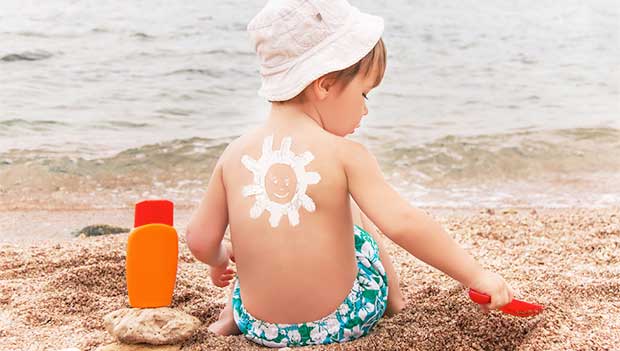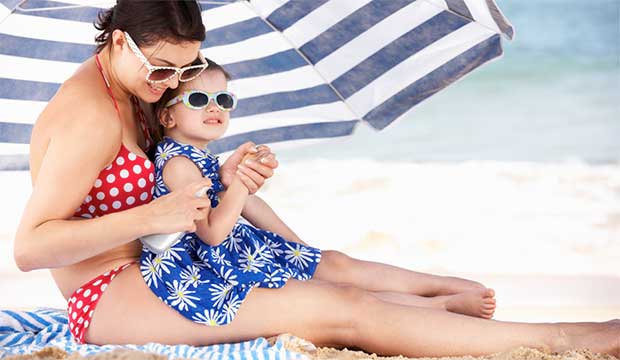Advertisement
10 Do’s and Don’ts for Protecting Kids’ Skin This Summer
| By YDD Contributor
Advertisement - Continue reading below

As parents, we know the importance of ensuring our children get proper nutrition and adequate amounts of sleep. We strive to find the ultimate educational toys and we surround our children in supportive environments. Unfortunately, even with all of our thoughtfulness and care, we might be overlooking one key factor in our child’s development and wellbeing: protecting their skin.
The Reason Protecting Kids’ Skin Care Matters
Our skin is the largest and fastest growing organ in our bodies. It’s also an important line of defense to protect us against germs and infections. Without skin, our bodies wouldn’t be able to absorb vitamin D or enjoy the sense of touch. If we don’t properly care for our children’s skin today, we can be setting them up for problems tomorrow that might have been preventable.
Take for instance, the fact that if a child has one blistering sunburn we automatically double a child’s risk for developing the deadliest form of skin cancer, melanoma. That statistic is frightening for many of us to realize, because how many times have we forgot to put on sunblock or make sure our little ones’ skin is adequately covered? With a little proactive planning and fortitude, we can do our part to protect our children’s skin from threats like skin cancer and other ailments.
10 Do’s and Don’ts for Protecting Kids’ Skin
Thankfully, we do have the ability to protect our kids’ skin to keep our sons and daughters happy and healthy. Please read the following do’s and don’ts for protecting our kids’ skin:
Do remember the sunscreen. Place the bottle by the door or carry an extra one in your bag. Children’s sensitive skin makes it essential to reapply sunscreen with an SPF between 30 and 50 about every two hours (or as recommended on the product).
Do try a small skin test before using a new product. Find a spot on a child’s wrist or leg to rub a small bit of the new product to see if the child will have an allergic reaction. Recently, a story has been circulating online about a young girl who had a terrible reaction to sunblock that resulted in blisters, terrible redness, and even burning. Listen to this cautionary tale and always do a spot test.
Don’t be outside during the hottest time of day or at twilight. We can avoid the strongest sun rays and hungriest mosquitoes by limiting our exposure during their peak hours. This can save our children from unneeded sun burns, heat rashes, and bug bites.
Do drink water. Keep our little one’s skin hydrated and supple by consuming adequate amounts of water. We know this is important for outdoor activities, but we should still push fluids if we are inside enjoying the air conditioning. Forced air is notorious for taking moisture out of the atmosphere, which can dehydrate us. In addition, by staying hydrated, children will feel great while participating in their favorite activities.
Do limit bathing. Frequent baths can cause dry skin, rashes, and irritation. Surprisingly, the American Academy of Dermatology recommends that kids aged 6 to 11 should only be bathing once or twice a week. This is great news for those of us who have been known to miss bath night here and there.
Don’t forget about the bugs. When we take our children outside, ensure they are dressed to avoid possible bug bites and stings. Consider wearing pants, long sleeves, and bug repellant to prevent uncomfortable welts, allergic reactions, Lyme disease, West Nile Virus, and more. As another precaution, encourage children to always wear shoes to avoid stepping on ant hills, insects, or even bees.

Do invest in clothing, sunglasses, and hats that protect against UV rays. Modern technology has made it possible to dress children in clothing that actually reflects damaging sunlight. These clothes are often breathable, lightweight, and affordable while adding an extra layer of skin protection.
Do moisturize their skin. Exposure to wind, heat, chlorine, allergens, and more can wreak havoc on the skin. Help them feel comfortable in their own skin by using lotion, moisturizers, or essential oils to treat common skin ailments.
Do dress for the weather. In the summer, look for natural lightweight clothing that allows heat or sweat to escape. This will prevent overheating and heat rashes. In the winter, make sure to layer clothing.
Don’t expose babies and toddlers to direct sunlight. Unfortunately, many sunblocks are not approved for our wee ones. Experts recommend limiting sun exposure for babies and toddlers by finding shady spots to rest outside to protect skin and eyes from the harsh sun.
Following these simple rules should help prevent your child from suffering skin damage. What suggestions can you share for protecting our kids’ skin?
Gwen Lewis is a writer who lives in California. She has been in the fashion and health industry for years and loves writing on the topic to give tips from experience. In her free time, she loves to stay active and has just taken on learning how to surf. For more, visit her online portfolio here.
Advertisement - Continue reading below
Share
On Facebook
